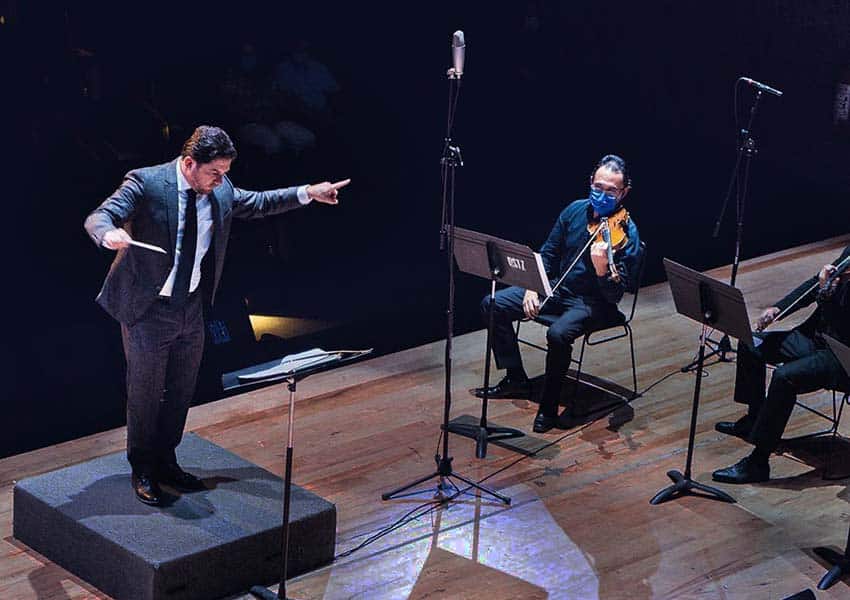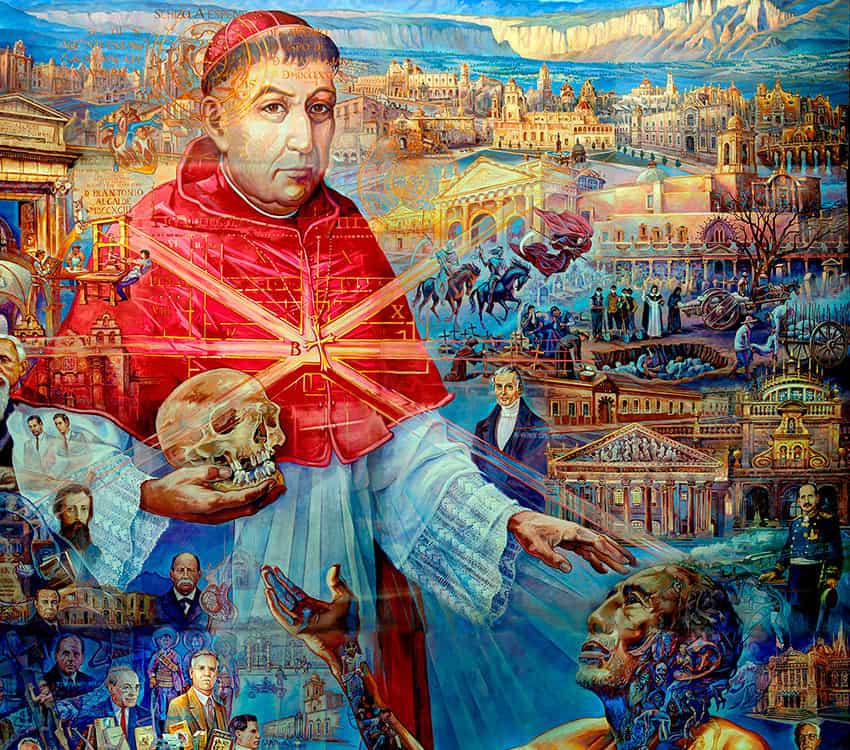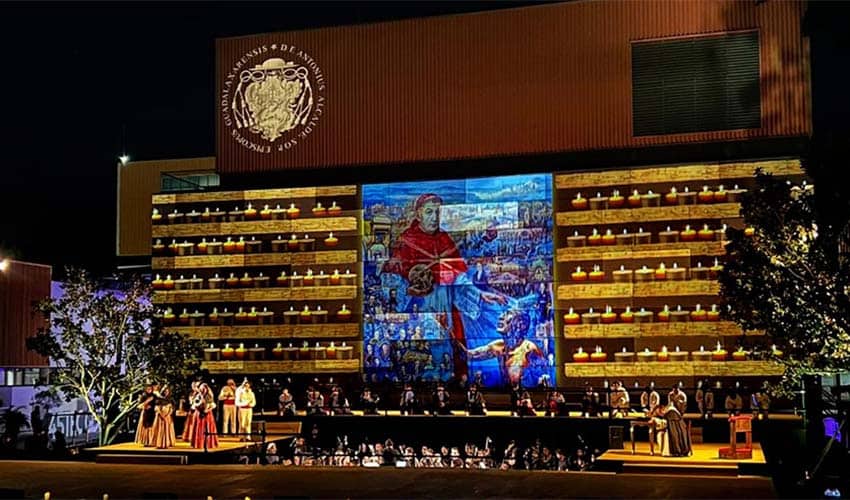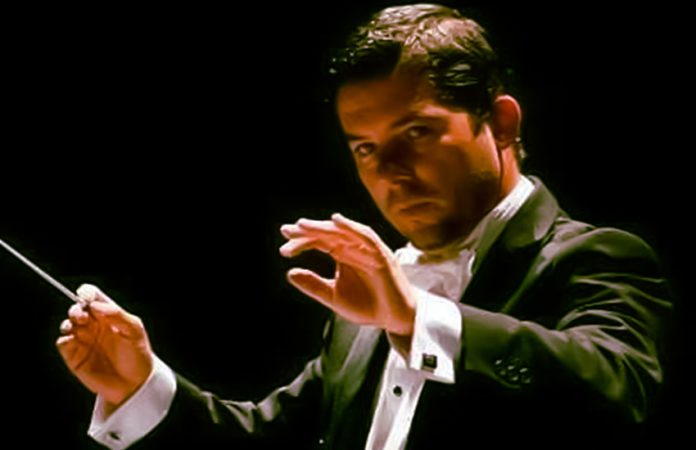“I didn’t expect to learn the history of my city in a context like this, through song and dance and fantasy. I didn’t know Guadalajara had nearly ceased to exist because of a plague of locusts and then again barely survived an epidemic of smallpox that wiped out 50,000 people in New Spain. And I had no idea Fray Antonio was such a fierce defender of women’s rights. Operettas are usually kind of silly, but this was profound and educational and at the same time very simpático.”
This was the enthusiastically surprised opinion of a woman who attended the premiere of “Réquiem for Fray Antonio Alcalde,” a two-hour spectacle presented at the Guadalajara campus of the Tec de Monterrey university on October 28, in memory of the Dominican priest who served as Guadalajara’s bishop from 1771 to his death in 1792. During this period, Alcalde built the San Miguel Hospital and founded the Universidad de Guadalajara. At least, that’s what he’s known for, but his accomplishments hardly stop there.
To demonstrate that Alcalde did much more than that, the two-hour event, directed by Beto Ruiz, with music by Vladirmir Gómez, Pedro Martínez del Pasó and Carlos Lay, employed two orchestras, two dance troops, two mariachi musicians, a theater group, lots of Tec University students and a giant background screen, not to mention the contribution of Mexican opera baritone Jesús Suaste.
A total of over 80 people onstage contributed to a show that somehow managed to combine elements of opera, operetta and the modern musical.

“This project,” said Vladimir Gómez, director of the Zapopan Chamber Orchestra — as well as the Tec de Monterrey Orchestra — “was proposed by an organization called The Fray Antonio Alcalde Foundation, which contacted the Tec de Monterrey with the idea of producing a “requiem” about Alcalde. You see, the Tec already has a tradition of doing what they call requiems for famous people, to recall their lives.
“Usually these requiems are simply readings, but we decided to do this for Alcalde on a big scale, with acting and dancing and live music. So I wrote music especially for this purpose.”
Gómez, who wrote most of the music for this show, told me that this spectacle narrates how Alcalde ended up in Mexico, first in Yucatán and then in Guadalajara. It also includes a bit about his outlook on life and his philosophy.
“Into all this,” he says, “we mixed a bit of fiction, a story about a couple in love in Spain, but the boy has to go to Mexico to study and he ends up in Guadalajara because Alcalde founded a university here. This is a period piece, set in the 1700s, so we added a bit of conflict to make a good show.

“I don’t know if this is an operetta or a musical, but it’s definitely not an opera. It’s a Frankenstein! There’s even a Broadway-style song in it.”
I asked Gómez how he became interested in music. He told me that, as a child, he happened to live very close to Guadalajara’s most prestigious theatre, the Degollado.
“As a boy,” he confessed, “I thought about nothing but fútbol (soccer), but my home was just two blocks from the Degollado, so that was my favorite place to hang out. It was all fun. Instead of watching TV, I would watch the rehearsal of a ballet or an opera or a folk dance.”
On one special day, Gómez told me, he was in the Degollado and heard a Stabat Mater [a Christian hymn to the Virgin Mary] by Rossini.

“I fell in love with the tenor’s aria and the a cappella chorus,” he explained. “I was mesmerized, and I said, ‘This is what I want to do. I want to make music like this.’ So I started singing in the chorus, and I learned to read music.”
At the age of 16, curious circumstances brought Gómez and opera together.
“I was in the Degollado watching a rehearsal,” he said, “and suddenly, for some reason, the chorus had to leave. So, there was the orchestra with no chorus, and the director looked out at the seats and saw me sitting there, and he said, ‘How about you, joven (young man)? Can you sing this?’
“’Yes,’ I said.

“‘Okay,’ he said. ‘Come over here!’ So I came and I sang for the orchestra, and that’s how my career began.”
The requiem presented at the Tec de Monterrey is just one of several projects bringing back the memory of Fray Alcalde in Guadalajara. New interest in the friar’s achievements was probably sparked in 2017 with the completion of a huge mural painted by local artist Jorge Monroy inside the city’s new public hospital.
Both the mural and the requiem remind the public of the curious manner in which an unknown friar in a lonely monastery in Spain ended up becoming the Bishop of Guadalajara.
It seems that when Alcalde was in his 60s, he was the abbot of the Valverde monastery in Spain. One evening, a group of hunters knocked at the gate, among them the king.

“We were lost in the woods,” said the king, “and we want to spend the night here.” Since the king’s visit was unexpected, he ended up sleeping in a very austere room adorned by nothing but a grinning human skull. During this visit, the King was impressed by Alcade’s keen mind and humility, as well as the fact that the abbot had succeeded so well at staying out of politics that he was totally unknown at court.
The following day, the king was back in his palace, and the order of the day was to designate a bishop for Mexico. Immediately, the king said, “We will send the friar of the skull.” Although he didn’t remember the abbot’s name, he did remember that skull. From then on, Alcalde was known as “The Friar of the Skull.”
This anecdote, of course, is just the beginning of the story of Fray Antonio Alcalde. If you’d like to hear more—in an entertaining way—you need to catch the next performance of this operetta-musical, but “I have no idea when that will be,” says Vladimir Gómez. “My ultimate aim is to turn this into a real opera.”
We are standing by. Viva the Friar of the Skull!
The writer has lived near Guadalajara, Jalisco, since 1985. His most recent book is Outdoors in Western Mexico, Volume Three. More of his writing can be found on his blog.
